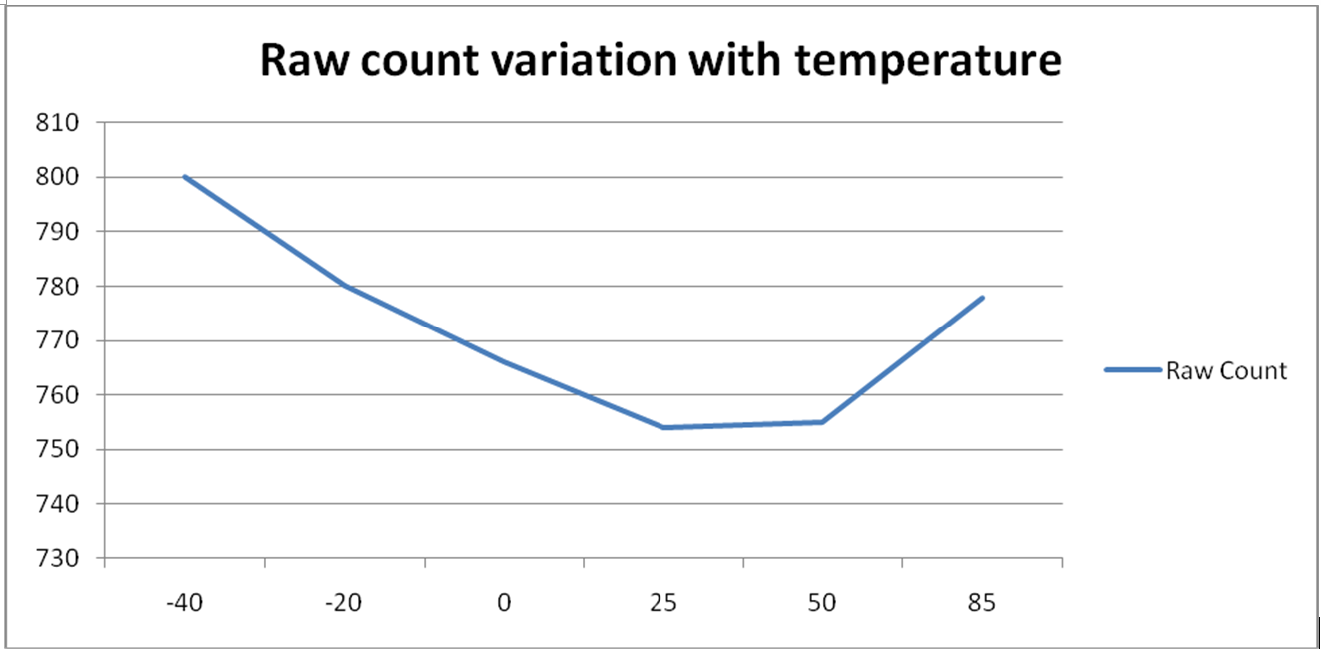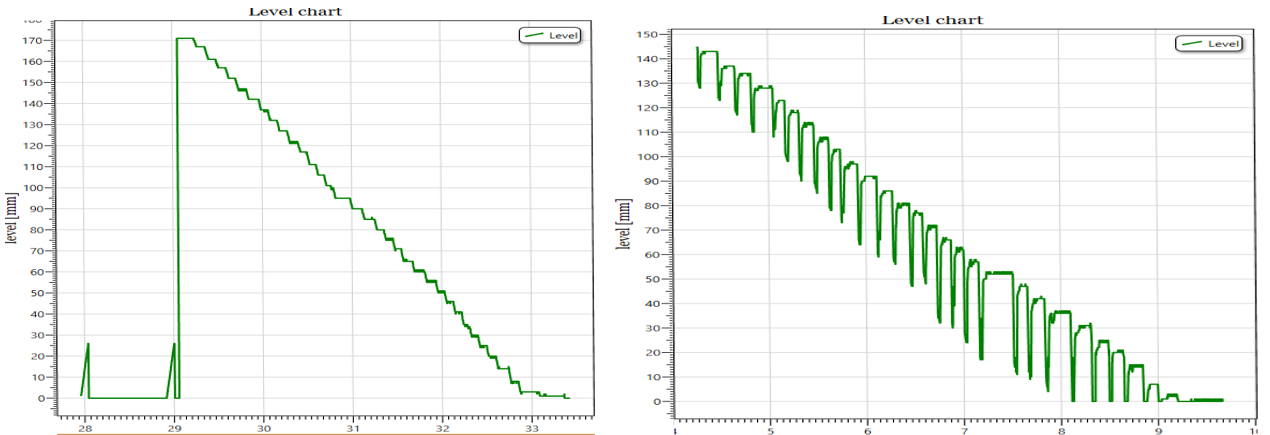BY SUBBARAO LANKA, Senior Staff Applications Engineer, and SHRUTI HANUMANTHAIAH, Staff Applications Engineer
Cypress Semiconductor
www.cypress.com
Liquid-level sensing based on capacitive sensors comes with its own challenges. It’s like absolute capacitance sensing. Unlike touch detection, the absolute value of the liquid level needs to be measured.
Furthermore, environmental factors such as temperature and the presence of conductive objects can affect sensing accuracy. The common factors that impact liquid-level sensing are as follows:
1. Temperature drift
2. Tank thickness
3. Liquid viscosity
4. Liquid salt concentration
5. Conductive objects
6. Air gap between sensors and tank
Temperature drift
Temperature fluctuations during sensing operation have the most significant impact on performance. With finger-activated capacitive sensing buttons — as compared to liquid-level sensing — the sensor value while not being touched by a finger is tracked over time to account for any ambient temperature-induced offset.
This compensated non-touched value is called the baseline. In touch applications, this is possible because, most of the time, the sensor is not being touched. Moreover, the relatively short touch events provide a large, instantaneous change in sensor values.
In liquid-level sensing applications, temperature compensation is more difficult because we cannot assume that the liquid sensor is not covered with liquid; it may be covered to any level for any length of time. We must, therefore, compensate for temperature variation through the use of algorithms and optimized sensor designs.
This approach minimizes the impact due to temperature drift, which affects a number of parameters in a liquid-level sensing system. First is the capacitance to be measured. Drift impacts other system parameters, such as the integrating capacitor and the current used by the capacitive sensing engine.
As a result of these variations, the raw count also increases or decreases because of temperature (Fig. 1 ). Capacitive sensing circuitry converts the measured capacitance to a digital count, which is known as raw count.

Fig. 1: Change in raw count due to change in temperature; X-axis is temperature and Y-axis is raw count.
There are two possible ways to overcome the issue:
Fixed temperature compensation capacitor
A temperature compensation capacitor is a sensor that has similar characteristics as the other sensors used for detecting the liquid level. However, it is not placed in direct contact with the liquid. In other words, this sensor must remain unaffected by the liquid level. The raw count of this capacitor is used as a reference for the actual sensors.
Since the temperature compensation sensor and the actual sensor have the same characteristics, the effect of temperature on both of the sensors will be the same. In this way, the impact of temperature on the liquid-level detecting sensors can be nullified by using the temperature compensation sensor as a reference.
It’s worth noting that temperature compensation on the liquid-level detecting sensor using the temperature compensating sensor has to be performed both when the tank is empty and when there is liquid in the tank.
Software algorithm on baseline
Software algorithms to detect a finger touch with capacitive sensing comprise a reference that is a filtered version of the raw count. This reference keeps track of slow environmental changes in raw count, and it’s typically called a baseline.
The baseline is used to detect the presence of a finger in case of touch detection. With liquid-level sensing, the baseline can be used to track changes in raw count. Temperature drift is often slow; hence, its effect on raw count is also slow.
In such cases, with appropriate values of baseline update parameters, the baseline can be used to compensate for temperature variations in raw count. If the effect of temperature on raw count is very fast, then a temperature compensation capacitor should be used instead.
A secondary effect of temperature is condensation. A liquid that is significantly colder than the ambient air temperature may cause condensation to form on the sensor surface. Condensation may cause a higher capacitance, which, in turn, causes an increased error.
Condensation during low-temperature testing can be reduced by insulating the surface of the sensor. Another approach is to provide a small insulating air gap between the liquid container and the sensor substrate. The air gap should not be larger than 3 mm for the best performance.
Tank thickness
Sensor response depends on the overlay thickness that is considered as the insulating material between the sensor and the conducting material to be detected. Challenges can arise if the tank thickness is too high or the change in signal with liquid and without liquid is too small to detect.
The thicker the tank, the lower the capacitance seen by the measuring system. And that leads to a smaller signal to work with. One solution to this problem is to get a large signal for a small variation in measuring capacitance. It can be achieved by scanning the sensor with higher resolution.
For example, if a sensor is scanned at a resolution of 9 bits when the liquid is present, the raw count increases by 10. Now if the resolution is increased to 13 bits, the sensor is effectively scanned for a duration 16 times that of the previous resolution. With this resolution, for the same range of capacitance sensing, the signal will be 160.
Liquid viscosity
Using capacitive sensing, liquids with low viscosity can be measured accurately. However, for highly viscous liquids, the liquid residue left when the tank is emptied will impact sensing. It delays the detection of tank emptiness, which can cause problems.
Thus, design tradeoffs must be made to achieve the best accuracy possible. For instance, the inside wall of the tank can be made smooth and slippery so that the liquid doesn’t stick to the wall.
Liquid salt concentration
Salt concentration in the liquid affects sensing accuracy. The higher the salt concentration, the lower the sensing accuracy. At room temperature, the effect of salt concentration is not very high. However, with an increase in temperature, the effect of salt concentration also increases.

Fig. 2: Salt concentration impact on sensing accuracy.
Fig. 2 shows the deviation from the real liquid level with 0.5-g/L and 35-g/L salt concentrations. It is important to recognize that salt concentration has an impact on accuracy. And design tradeoffs must be made to achieve an acceptable accuracy level.
Conductive object interference
The sensor used for liquid detection and temperature compensation capacitor should be placed away from other conductive objects like people. If a conductive object is close by, there is a higher chance of reporting the wrong result.
So the solution to this problem is proper isolation between the sensing circuitry and other conductive objects through the use of shields.
Air gap between the tank and the sensors
As the air gap between the sensors and the tank increases, sensing accuracy decreases. One solution to this problem is to increase the sensitivity of the sensors and avoid crosstalk between sensors using appropriate threshold values and firmware algorithms.

Fig. 3: Air gap between the tank and the sensors.
Advertisement
Learn more about Cypress Semiconductor





